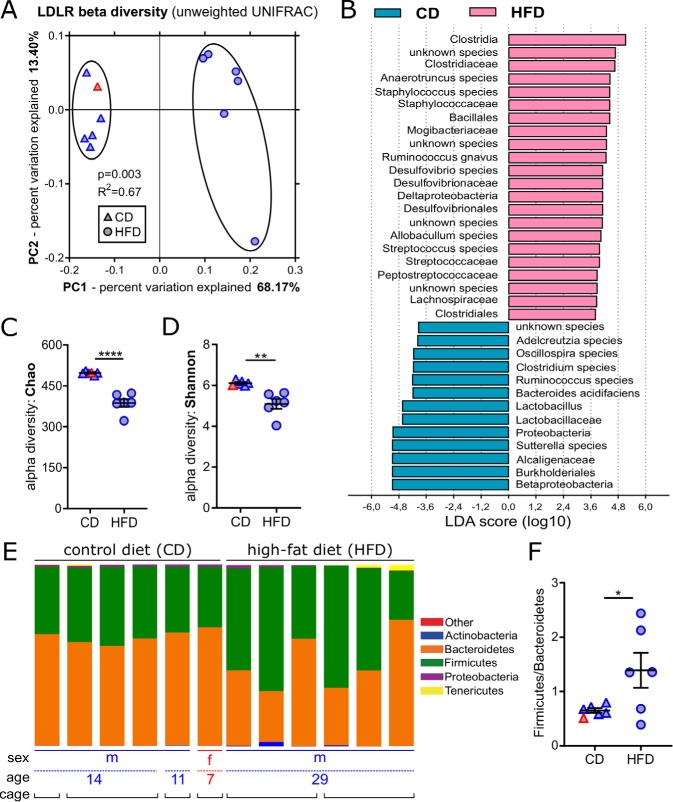FIG 1.
HFD feeding promotes microbiota dysbiosis in Ldlr−/− mice as revealed by cecal 16S ribosomal DNA amplicon sequencing. (A) Principal coordinate analysis reveals distinct separation in microbiota composition due to diet (P = 0.003 for control diet [CD] versus high-fat diet [HFD]). LDLR, LDL receptor. (B) Linear discriminant analysis (LDA score) effect size (LEfSe) highlights differentially abundant microbial taxa (CD versus HFD). (C and D) Reduced alpha diversity in HFD versus CD using Chao richness (C) and Shannon entropy (D) metrics. (E) HFD-induced changes in microbiome composition on the phylum level. (F) Firmicutes/Bacteroidetes ratio in CD and HFD samples. In panels A, C, D, and F, the sex of the mice fed CD (triangles) and HFD (circles) is color coded (females [red] and males [blue]). In panels C, D, and F, means ± standard errors of the means (SEM) (error bars) are shown for the groups. Independent samples from mice fed HFD versus CD were compared by Student t tests, and values that were significantly different are indicated by bars and asterisks as follows: *, P < 0.05; **, P < 0.01; ****, P < 0.0001.

